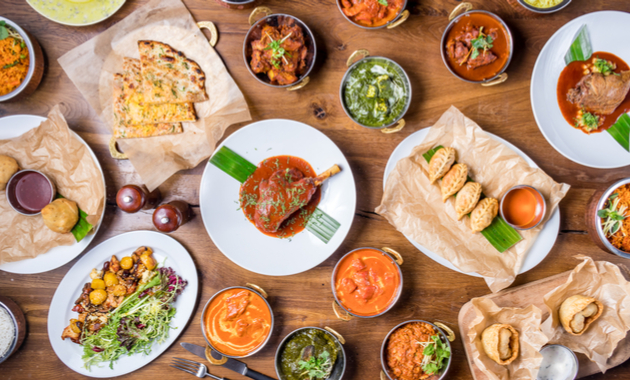
Of all the cookies in a plate, most kids tend to pick the biggest one of the lot.
While grocery shopping, the bigger packet always grabs our attention.
In movie theaters, bucket popcorn usually wins over large popcorn.
And the list goes on…
Given a choice, we often pick the one that provides more, be it at restaurants, shops or at home. But this habit might be responsible for weight gain! According to a 2005 article published in The Journal of Nutrition, the rise in obesity over the years can be attributed to a parallel increase in the portion size of many foods and the prevalence of eating out. Here are scientific reasons why you indulge your taste buds and go overboard with serving sizes on a regular day and not just on special occasions or festivals.
Eating out is distracting: A 2002 study done by researchers of The Pennsylvania State University, USA[1], revealed that larger portion sizes led to greater food consumption irrespective of the method of serving and the characteristics of the people in the study group. The study showed that the subjects consumed 30% more food when offered the largest portion as against the smallest portion. After the study was over, around 55% subjects did not notice the differences in the portions served.
This indicates that most people tend to be unaware of the portion size when eating out because of more distractions and less focus on food.
Larger the food packet more the bingeing: The amount of food in a package also influences how much you eat, claims a study published in the journal Appetite[2]. In this, the study participants (both men and women) were served varied quantities from 28 mg to 170 mg of plain potato chips. Women ate 18% more and men ate 37% more when served 170 mg than when served the 85 mg package. The participants not only reported to be fuller but also did not adjust the intake of food at meals to compensate for the increased energy intake and fullness during snack time. This proves that the portion size does have a significant effect on the snack intake.
Bigger tableware means larger portion size: It was seen that people consistently tend to consume more food when large tableware is used than when offered smaller-sized plates, bowls and serving spoons[3]. It not only reduces the portion size but also causes reduction of more than 50% of the intake of sugar and carbohydrate rich foods, which are responsible for weight gain and obesity in the long run.
It’s time to take care of your family’s nutrition and wellness. Click here for more!
Remember that larger portions mean more calories Here are few tips from the National Heart, Lung and Blood Institute (NHLBI) on how to control your portion size.
–Serve your food and drinks in red colored plates and glasses as eating in red plates can influence your appetite. According to a 2012 study conducted on 240 participants[4], it was seen that people who were served food in blue and white plates eat more than those who were served food in red plates.
– One way to keep calories in check is to keep each serving size no larger than the size of your fist. So if you are supposed to eat only a single serving of rice for dinner, imagine the amount that would look like your fist when scooped. Two servings of protein means two times the size of your fist and so on.
– Cut high calorie foods into smaller portions and eat some or not all. So instead of eating a packet of chips at one go, you eat just a handful.
– Substitute a salad for french fries or have fruits and vegetables instead of instead of sweets for snacks. This helps in maintaining your caloric intake well within control and also make you eat healthy.
– When eating out, order smaller portion sizes and share your food or eat half a meal and bring the rest home. By not eating the entire meal served in restaurants at one go but spreading it over the day can help you to keep a tab on your food intake. Stop trying to eat everything at a buffet!
Weight Loss Is 99% Mental And 1% Physical. Start Your Journey Today. Click Here.
Recommended Reads:
5 Fiber Rich Foods That Are Excellent For Weight Loss
7 Healthy Ways To Eliminate Refined Sugar From Your Daily Diet
References:
1. Rolls BJ, Morris EL, Roe LS. Portion size of food affects energy intake in normal-weight and overweight men and women. Am J Clin Nutr. 2002;76(6):1207-13.
2. Rolls BJ, Roe LS, Kral TV, Meengs JS, Wall DE. Increasing the portion size of a packaged snack increases energy intake in men and women. Appetite. 2004;42(1):63-9.
3. Hollands GJ, Shemilt I, Marteau TM, Jebb SA, Lewis HB, Wei Y, Higgins JP, Ogilvie D. Portion, package or tableware size for changing selection and consumption of food, alcohol and tobacco. Cochrane Database Syst Rev. 2015;(9):CD011045.
4. Genschow O, Reutner L, Wänke M. The color red reduces snack food and soft drink intake. Appetite. 2012;58(2):699-702.